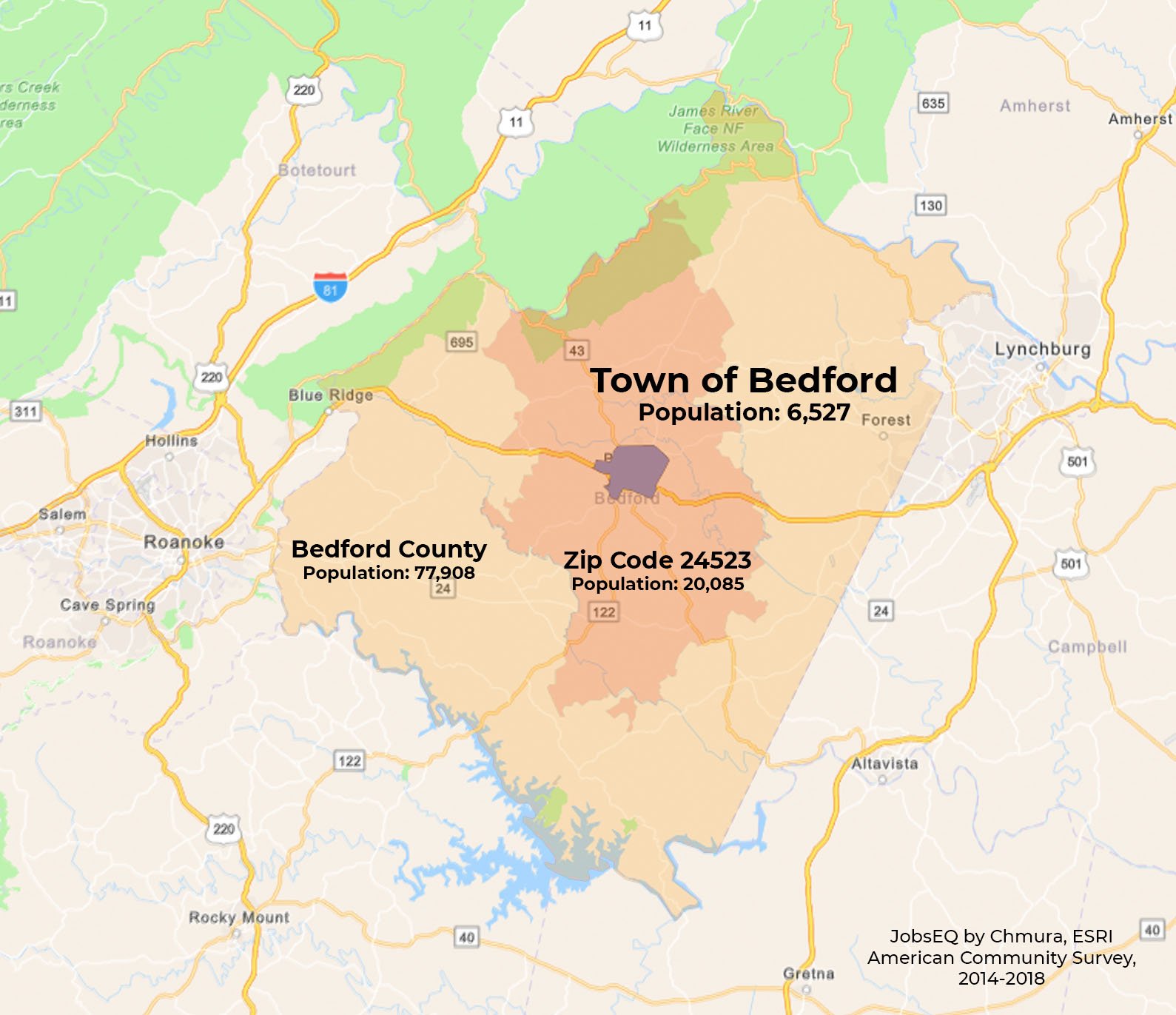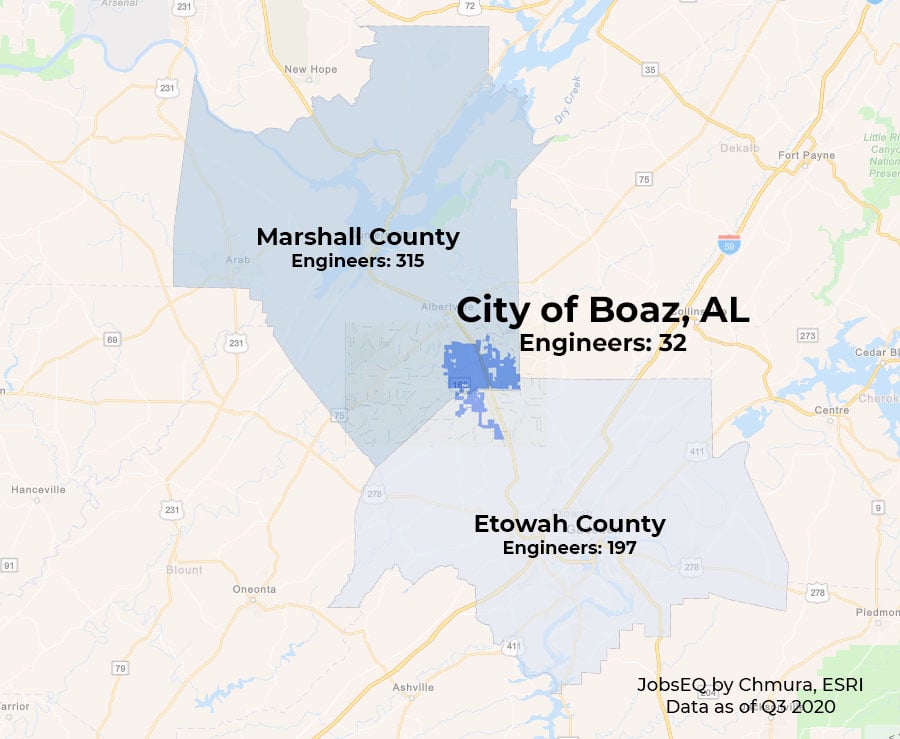Can cities and towns, especially smaller ones, get accurate labor market information?
If you work for a town or city, you know the frustration. Finding labor data for a county or metropolitan area is hard enough. But if you’re looking for data for a town or city, it adds another level of difficulty, or may make the job impossible. Need up-to-date employment figures? Looking for job postings data just for your city, and not the surrounding area? Want an abundance of labor market data, and all in one place?
In fact, someone recently reached out to Chmura with this exact problem:
“When we were the City of Bedford, until reverting to a town in 2013, we had our own Census data. Now we are thrown in with Bedford County and I can’t see anything useful. Full zip code data won’t help now. Can JobsEQ get to our little town level?”
The answer is—yes! JobsEQ can get to your town level. In this blog we’ll explain how using “place” data from the U.S. Census Bureau solves the common small-town-data frustration. All data and maps shown in this blog are from JobsEQ by Chmura.
What is place data?
Place data helps people analyze all cities, towns, or villages that don’t align neatly with county or zip code boundaries. In the example above, the Town of Bedford is a “place.”
If you want to get technical, a “place” is shorthand for “census-designated place” which is a concentration of population which has a name and is locally recognized. A place is defined by the U.S. Census Bureau as a group of census blocks. A place includes legally incorporated places, like a city, town, or village, and unincorporated communities, which are settled concentrations of population that lack a government.[1]
Place data are crucial for small towns.
To see why, let’s dig deeper into our Town of Bedford example.
The Town of Bedford, Virginia only has a population of 6,527 people but is located within Bedford County, which has a population of 77,908. Even if you look at zip-code level data, the Town of Bedford is still obscured: zip code 24523 has a population of 20,085. Without place-level data, it would be difficult for Town of Bedford government officials to find data about their town!

For Bedford, there is over a ten times difference between the place-level population data vs. the county-level population data. Of course, the difference between place data and county or zip code data will vary depending on the place. Some towns may match better to the nearest zip code or county. The difference will also vary based on the type of data you’re looking at (demographics, occupations, industries, etc).
However, it’s safe to say that place data is crucial for small towns and cities like Bedford. Contact Chmura here to see if JobsEQ has place data for your locality.
Wait, how can you get smaller than zip code-level data?
A “place” is created by stitching together census blocks, which are the smallest geographic units used by the U.S. Census Bureau. In a city, a census block may look like a city block bounded on all sides by streets. Rural or suburban census blocks may be larger and more irregular. A place combines these blocks into one unit: like the Town of Bedford. Place data allows you to get data on the specific city or town you care about.
Get industry and occupation data at the place level.
For place regions in JobsEQ, you can find: occupation employment by place-of-work and place-of-residence; current and historical industry employment at the 2-digit NAICS level; postsecondary completions; most of the population and demographics data found in the Demographic Profile; and analyses such as the What-If, Occupation Gaps, and Willing & Able.
To see why this matters, let’s look at another example: the City of Boaz, AL. Boaz straddles two counties and three zip codes, making it very difficult to get accurate data on the City of Boaz’s industries, occupations, or demographics. But with place data in JobsEQ, we can answer specific questions. The chart below displays the number of engineers in the City of Boaz and the surrounding counties, by place of work.

Place data on industries and occupations can help workforce boards, economic development organizations, or city governments develop strategic plans for their communities. Trying to develop a plan without accurate data on your town is like driving without your glasses on: you might crash.
Don't sacrifice precision.
The way small cities can access accurate labor market information is through place data. You don’t have to get “thrown in” with county data.
JobsEQ by Chmura has place data to help small localities. Contact us today to see how you can get high-quality data on the place that matters to you.
[1]https://www.census.gov/content/dam/Census/data/developers/understandingplace.pdf, https://www.census.gov/programs-surveys/geography/about/glossary.html#par_textimage_14